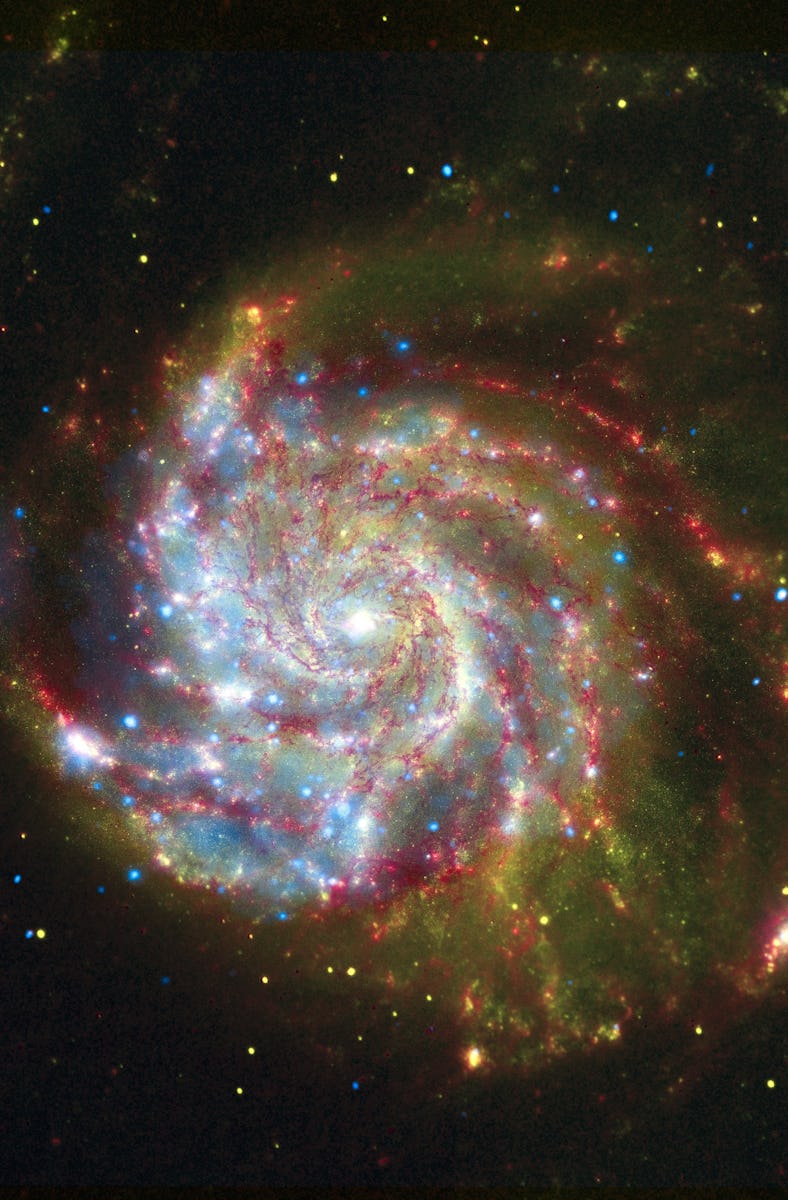Astronomers Just Noticed Something Bizarre About Elderly Galaxies
It turns out that galaxies get messier with age.

Galaxies get more chaotic as their stars age, a new study suggests.
The universe contains about 100 billion galaxies, and no two are exactly alike. In some, stars whirl around the center in neat, circular orbits, making the whole galaxy seem to spin in unison like a pinwheel. In others, the stars move in their own disorderly routes, sometimes in long, stretched ellipses and sometimes on wildly tilted orbits around the galaxy’s center of gravity.
A recent study suggests an explanation: Older stars have more time to be fesity. University of Sydney astronomer Scott Croom and his colleagues published their findings in the Monthly Notices of the Royal Astronomical Society.
Coom and his colleagues compared the rotational velocity (how much the galaxy’s stars were spinning around its center) and the random velocity (how much the stars were moving in other directions) for each galaxy in their survey.
Disorderliness comes with age, at least for stars
Croom and his colleagues used a telescope at Siding Spring Observatory to survey about 3,000 galaxies. The survey, using an instrument called SAMI (or the Sydney-Australian-Astronomical-Observatory Multi-object Integral-Field Spectrograph), collected data on the galaxies’ age and mass, as well as whether they were part of crowded galaxy clusters or more solitary. SAMI also measured the motion of the stars in each galaxy, so Croom and his colleagues could tell whether the galaxy was a neatly spinning disk, or a messy bunch of stars doing their own things.
The astronomers were interested in what made some galaxies orderly and others more free-spirited: the galaxy’s own mass, interference from neighboring galaxies’ gravity, or something else. Their answer turned out to be age: galaxies with older stars, on average, tended to be more disorderly than galaxies with younger populations of stars.
What’s important here isn’t the age of the galaxy itself, but how long ago it stopped forming new stars. In a galaxy that’s still producing new stars (in stellar nurseries like our nearby Orion Nebula), new stars are born even while other stars are aging and dying, so the average age of the galaxy’s stars stays fairly young. But when a galaxy stops producing new stars — often because it runs out of material — there are no new young stars to replace the aging ones, so the galaxy ends up with a population of older stars.
“When stars have plenty of gas to fuel new star formation, they generally maintain a thin rotating disk,” Croom tells Inverse. “This is because the gas cools and loses energy before it collapses to form stars.” Cooler gas is less prone to bouncing around, so it tends to revolve in a relatively neat disk instead of tilting at sharp angles or stretching into elliptical orbits. Stars that coalesce from that orderly cloud of gas tend to follow the same circular orbit around the galaxy’s center of gravity.
But as stars age, they get feisty.
“Once star formation stops, then there is an opportunity for the stars that are present to be perturbed and given more random orbits,” says Croom. Stars might pass close enough to nudge each other onto new orbits, or small bits of turbulence in the galaxy’s disk might evolve into large formations, like the bar across the center of spiral galaxy NGC 1566.
Earlier studies had suggested that whether galaxies spin neatly or contain more chaotic movement may have something to do with the environment nearby. Galaxies in crowded galaxy clusters seemed to be more prone to disorder. According to Croom and his colleagues, however, older stars are still the culprit.
“We have known that dense environments (e.g. galaxy clusters) tend to shut down star formation, so galaxies in high density environments are older (that is, the average age of their stars is older),” says Croom.
In their survey data, Croom and his colleagues found that young, star-forming galaxies tended to be rotating neatly, even if they were found in a dense star cluster. Galaxies made up entirely of older stars tend to have more random motion, no matter where they were found.
So just like people, stars can get more feisty and less conformist as they mature.